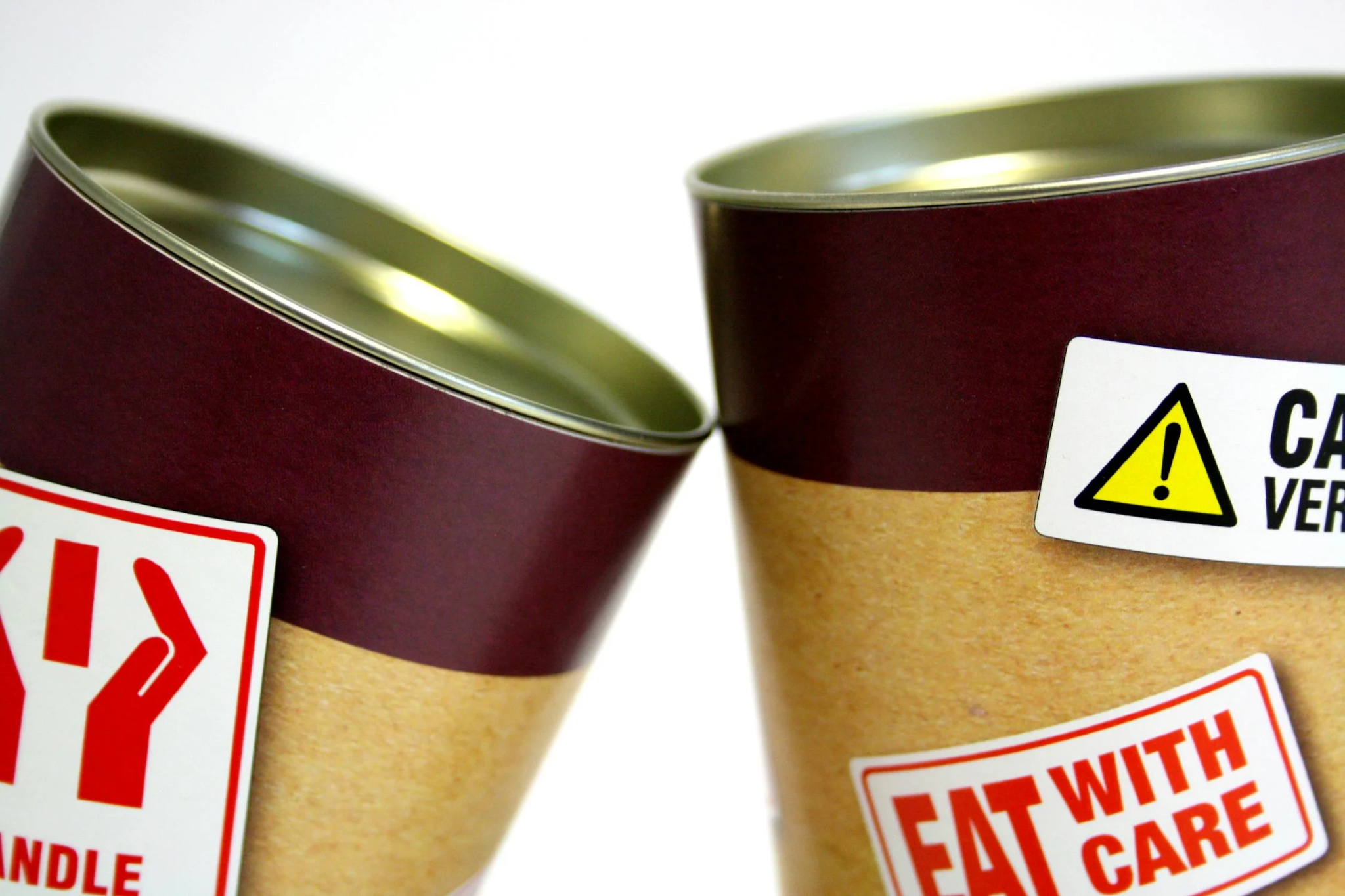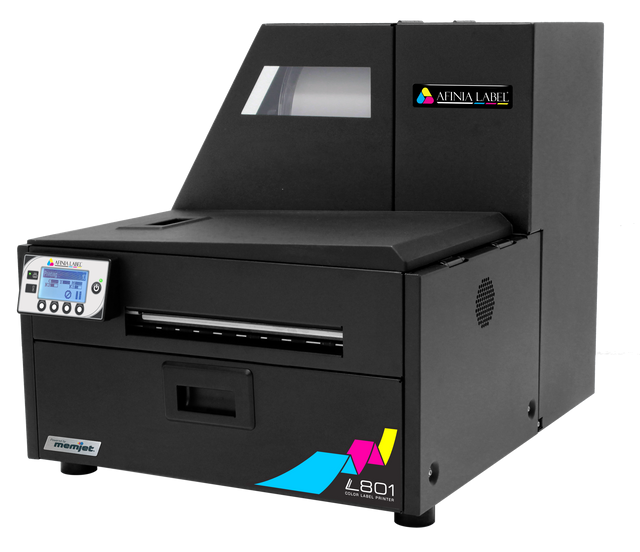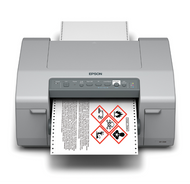Dealing with Poor Print Quality? How to Get Crisp, Professional Labels Every Time
10th Jun 2025
When it comes to labeling, the quality of your prints speaks volumes about your brand. Whether you’re labeling products for retail, shipping items, or ensuring compliance in industries like pharmaceuticals or food, your labels need to look professional. Poor print quality—like blurry text, smudges, or faded graphics—can damage your reputation, lead to costly errors, and even result in regulatory issues. Inconsistent or unclear labels may cause misidentification, delays, or failed scans in warehouse operations.
At DuraFast Label Company, we understand how crucial high-quality, crisp labels are to your business. Our range of label printers and supplies are designed to meet the highest standards, ensuring you get clean, professional results every time. But achieving perfect print quality isn’t just about having the right equipment. It also involves understanding and addressing common issues that lead to print defects.
In this guide, we’ll walk you through common print quality issues and share expert tips on how to fix them, so your labels are always sharp, clear, and ready for business.
The Usual Suspects: Common Print Quality Issues

When your labels aren’t turning out as crisp and clear as they should, it’s crucial to identify what’s causing the problem. Poor print quality can manifest in various ways, but some issues are more common than others. Here are a few key problems to look out for:
1. Blurry Prints
Blurry prints are often caused by incorrect printhead alignment or improper resolution settings. If your printer is set to a low resolution (DPI), the printout will lack sharpness, making text and barcodes difficult to read. Another cause is a worn-out or dirty printhead that struggles to produce clear lines and text.
2. Smudging and Streaking
If ink or toner doesn’t dry properly on your label material, it will smudge or streak when handled. This is especially common in high-moisture environments or when using incompatible labels and inks. Smudging can ruin the professional look of your labels and result in unreadable prints, making them unusable for scanning or identification.
3. Fading Prints
Fading or washed-out prints occur when there is insufficient ink or toner being deposited onto the label material. This often happens with incompatible label materials or ink types that don’t bond well with the surface. For instance, non topcoated direct thermal labels tend to fade faster compared to premium topcoated direct thermal labels, especially when exposed to heat, light, or moisture.
4. Banding or Lines
Banding refers to horizontal lines or gaps in printouts, typically caused by a clogged or damaged printhead. When the printhead’s nozzles are blocked or misaligned, the ink or thermal transfer material isn’t deposited evenly, leading to inconsistent prints.
These issues may seem simple, but resolving them quickly is key to avoiding operational disruptions and ensuring that your labeling processes stay efficient. Understanding the root causes is the first step to getting crisp, professional results every time.
Printhead Maintenance: The Overlooked Hero of Label Clarity

When it comes to achieving high-quality print results, printhead maintenance is often the most overlooked factor—but it’s also one of the most crucial. The printhead is responsible for transferring ink or thermal energy onto the label surface, making it the heart of the printing process. A well-maintained printhead ensures that your prints come out sharp, crisp, and free of defects.
Dirty or Worn Printheads
Over time, printheads accumulate ink residue, dust, and other particles that can clog the nozzles or impact print quality. When the nozzles are blocked, the printer can’t deposit ink properly, leading to smudging, banding, or poor print clarity. In thermal transfer printers, this can also cause uneven heat distribution, resulting in faded prints.
Signs of a Clogged Printhead
If your prints start showing gaps, fading, or streaks, it’s a clear sign that your printhead might be dirty or clogged. Regular cleaning is essential to prevent these issues. Depending on the printer model, there are different cleaning methods—ranging from cleaning wipes designed for printhead maintenance to using compressed air to blow away dust.
How Often Should You Clean the Printhead?
How frequently you need to clean your printhead depends on your printing volume, the type of labels you use, and your environment. As a rule of thumb, if you're printing frequently (e.g., daily or weekly), it's best to clean the printhead at least once a month. In more dusty or humid environments, you may need to clean it more often.
Keeping your printhead in top condition is one of the easiest ways to ensure long-term print quality. If your printhead is worn out beyond cleaning, replacing it with a new one will restore your label printer’s ability to produce high-quality prints consistently.
Choosing the Right Materials: Ink, Ribbon & Label Compatibility
One of the most common reasons for poor print quality is using mismatched materials. Whether it’s the wrong ink, ribbon, or label stock, choosing the right combination is essential for achieving crisp, clear, and durable prints. At DuraFast Label Company, we understand how critical it is to get the material selection right—and we’re here to guide you through the process.
Ink and Ribbon Compatibility
In thermal transfer printing, the ribbon and label must be compatible with each other to achieve the best results. Using the wrong ribbon type (such as wax, resin, or a hybrid) for a specific label can result in fading prints or improper ink transfer. For example, wax ribbons work well for paper labels but may not be durable enough for synthetic materials, where resin ribbons are more suitable. Choosing the right ribbon for your labels ensures that the print stays sharp and resistant to smudging or fading.
Selecting the Right Label Stock
When it comes to label materials, one size does not fit all. Labels come in a variety of coatings and finishes, such as matte, gloss, or top-coated, each designed for different printing technologies. For example, non topcoated direct thermal labels are typically best for short-term applications where labels are exposed to minimal handling. On the other hand, premium topcoated direct thermal labels offer higher durability and resistance to abrasion, heat, and moisture, making them ideal for long-lasting, high-quality prints.
For inkjet or laser printers, selecting blank inkjet labels or laser sheet labels for sale that are designed for your specific printer is critical for preventing issues like ink bleeding or paper jams. Additionally, color label printers for sale that are optimized for specific label materials ensure that you get vibrant, clear prints every time.
Choosing the right materials not only impacts the clarity of your prints but also ensures that your labels last as long as your products do—resisting fading, peeling, and other wear and tear that can compromise their effectiveness.
Optimizing Printer Settings for Professional Results

Once you have the right materials in place, it’s time to focus on optimizing your printer settings to ensure top-quality results. Adjusting a few simple settings on your label printer can make a significant difference in achieving clear, crisp labels every time. Here are some key factors to consider:
Print Resolution (DPI)
The print resolution, measured in dots per inch (DPI), determines the sharpness of your labels. A higher DPI means better print clarity, especially for detailed images and small text. Most professional label printers allow you to adjust the DPI settings. For barcodes, text, or images that need to be easily scannable, opt for a higher DPI (300 DPI or more). While higher DPI settings may slow down printing speed, the improved clarity is worth it for most applications.
Print Speed
While it might seem tempting to speed up printing for high-volume jobs, printing too quickly can lead to poor quality. Faster printing speeds don’t give the printhead enough time to transfer ink or heat onto the label properly, causing uneven prints. Adjust your printer settings for an optimal balance between speed and quality. Slowing down the print speed slightly can help eliminate issues like streaks or blurring, resulting in a professional finish.
Media Calibration and Label Size
Many label printers have calibration functions that ensure the printer is aligned with the size and type of material you’re using. Ensure your printer is calibrated to match the exact dimensions of your labels and media type. This will help prevent issues like print misalignment or cutting errors.
Using these printer settings effectively, in combination with the right materials, ensures that you get the crisp, professional labels your business needs—whether you're printing in bulk or on-demand.
Trust DuraFast for Flawless Labels
Achieving professional, high-quality labels consistently doesn’t have to be a challenge. By understanding common print quality issues and implementing the right strategies—from proper printhead maintenance to choosing the right materials and optimizing printer settings—you can significantly improve your print results. Whether you're facing blurry prints, smudging, fading, or other defects, addressing the root causes can ensure your labels are clear, durable, and ready for action.
At DuraFast Label Company, we provide a wide range of solutions to help you achieve crisp, professional labels every time. From color label printers to thermal transfer labels for sale, we offer high-quality products and expert support tailored to your business needs. Our team is always ready to guide you in choosing the best materials, printers, and accessories for your application, ensuring your labels not only look great but also perform well under any conditions.
Don’t settle for subpar print quality. Contact us today to help you create labels that elevate your brand and streamline your operations.
